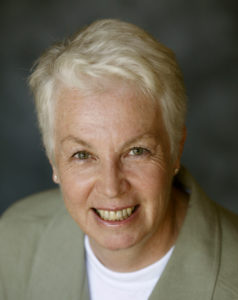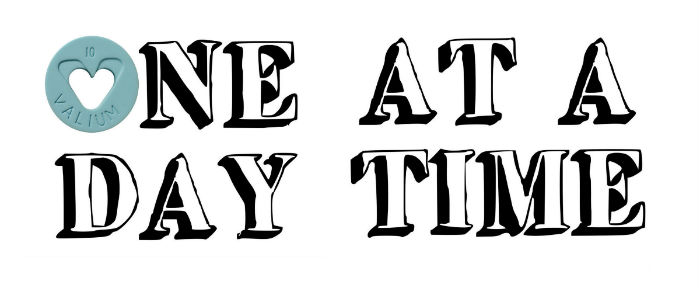by Jenny England
Jenny writes…
It is day nine since I began the last leg of my taper and I still feel pretty crap but not as bad as a few days ago. It has taken months to get the dose down to .5 mg a day and I can’t see myself giving that up yet. On a positive note, I am still sleeping a few hours a night which is not too bad for me, as I am a bit of an insomniac at the best of times.
I really want to get off the diazepam (more commonly known as Valium) this time. I have tried a couple of times before but because of the intolerable withdrawal symptoms, then a series of stressful life events, I went back on it. It is not that I ever took a very large dose, perhaps only 2 mg at the most in any one day but because of my drug sensitivities, 2 mg is quite strong: it can really knock me about. But it can also make me dizzy, unsteady and depressed. I want out.
The first time I stopped taking it, the impact of the withdrawal symptoms took me by surprise. I thought I hadn’t taken that much and I hadn’t taken it every day over the preceding couple of months. My local GP had given me a prescription to help during a stressful situation as a muscle relaxant to help with chronic pain. I just needed to relax and it seemed one way of doing it until I could cope again. I woke up about a week after I had taken the last pill feeling very, very sick. Nothing compared to the feeling except for how you feel after coming out of an anaesthetic after surgery. It took me a few days to twig and I went to a new doctor, saying: ‘I think I am having withdrawal symptoms from Valium’. What I wanted to know was how long this dreadful feeling was going to last and whether I should keep going cold turkey or restart and gradually reduce the dose. Well I kept going cold turkey and the symptoms eased gradually over the following months but I still felt pretty depressed and in pain again. So, you guessed, I went back on it.
I did try again a few more times but knowing what I was in for made it even harder. Life throws you a lot of curved balls and a few more stressful events, including my mother’s death and my husband being diagnosed with prostate cancer and then pulmonary embolism, sent me back to the those little pills again.
This time, I really mean it. I know I have to get it out of my system, get through the withdrawals and find more constructive ways of dealing with stress and my physical aches and pains. Over the years I had no trouble giving up cigarettes, alcohol and then coffee and tea but this is hard. One of the worst things, apart from the insomnia, is that food tastes disgusting, making eating (and even cooking or thinking about food) difficult. On top of that, the physical aches and pains make life uncomfortable, although walking does help a little. I have constant ringing in my ears and I’ve gone partially deaf.
Although these withdrawal symptoms are horrendous, as I am only coming off a relatively low dose I have been spared the most severe symptoms like seizures and even death.
One of the most insidious prescription drugs that can lead to physiological dependence are the benzodiazepines which include the brand names Valium, Xanax, Ativan, Serapax, Normison and Mogadon to name a few. Benzodiazepines are a particular class of minor tranquillisers, commonly known as benzos.
The first benzodiazepine tranquiliser, chlordiazepoxide (Librium) was synthesized by accident in 1955 and made available to the public in 1960. Valium (diazepam) was introduced in 1963 and quickly became a popular drug for treating anxiety and insomnia. Slower acting benzodiazepines such as Ativan, Serapax, Temazepam and Xanax were subsequently developed and put on the market over time. Doctors were not generally aware of the dangers of this class of drugs until admissions to hospitals due to a variety of issues with them rose 79% between 1992 and 2002. Concerns were then raised but they have still been prescribed widely and can lead to acute dependence even when only used for a short period of time, as I found out.
 Australian rate of prescription drug dependence has recently been reported as the 2nd highest in the world after the US. The only statistics I could find were from a study completed in 2014 that involved analysing prescriptions between 1992 and 2011. During this 20 year period, 174,080,904 scripts for benzodiazepines were recorded with temazepam being the most dispensed (35%) followed by diazepam (23%). Even though overall there was a slow decrease especially for alprazolam (Xanax) which is now banned in Australia, most of the prescriptions reflected long-term use. It’s frightening indeed.
Australian rate of prescription drug dependence has recently been reported as the 2nd highest in the world after the US. The only statistics I could find were from a study completed in 2014 that involved analysing prescriptions between 1992 and 2011. During this 20 year period, 174,080,904 scripts for benzodiazepines were recorded with temazepam being the most dispensed (35%) followed by diazepam (23%). Even though overall there was a slow decrease especially for alprazolam (Xanax) which is now banned in Australia, most of the prescriptions reflected long-term use. It’s frightening indeed.
So what exactly is going on? What has led me down to this awful place in my life? It is known as iatrogenic (medically created) physiological dependence on a benzodiazepine drug. There are possibly hundreds of thousands of people out there in the community just like me who are now suffering, first from the physiological dependence, then a tolerance that can build up over time when the body gets used to the drug and needs more to work and finally the horrendous withdrawal symptoms if someone decides to reduce the dose or stop taking it altogether.
How could such a predicament occur? I suspect it is partly due to the ease of obtaining these drugs through local doctors who don’t have much experience with benzo dependence or the time to help patients deal with chronic pain, anxiety or depression by more natural or drug-free alternatives and the deep-seated belief in our culture that taking a pill can be a cure for anything. For the last 50 years or so we have been encouraged to believe that just about anything can be cured with a pill and the pharmaceutical industry is making big money from it and so it continues. Few people, I imagine, are aware of the insidious nature of prescription drug dependence: it just seems to creep up on you while you are not watching. Just because a drug is prescribed by a doctor for a legitimate reason does not mean it is 100% safe.
It is day sixteen and I have just had one of my worst nights so far. Sleep finally did come to me around 4 am for a few hours but now I also have a head cold which is making all the withdrawal symptoms worse. At least I didn’t have any nightmares like I did a few nights back when we went down the coast to visit the grandchildren during the school holidays and stayed in a resort. It is hard to imagine that just by dropping the dose by about 1 mg over a week can be so difficult. I’m still on .5 mg at night and can’t see that I will be ‘jumping’ (the term used for stopping altogether) just yet. Feeling sick is becoming the new normal. I hope it’s not going to stay that way!
Looking for some support I found an online community forum, Benzo Buddies. I joined and began scanning the threads but found it a bit slow so I checked out Facebook and joined a Benzodiazepine Recovery Group which is more active except that most of the members are in the northern hemisphere so I have to consider the time differences when I go online. Both groups reconnected me with The Ashton Manual, the renowned ‘benzo bible’ written by Dr. Heather Ashton. It is full of detailed information on benzo dependence and step by step slow tapering withdrawal: the best way to go.
Connecting with others around the world trying to come off these dangerous drugs started to give me the support I was looking for. I also made me realise the power of a quiet revolution that is going on, behind closed door, far from the watchful gaze of the medical profession and pharmaceutical fraternity: people taking steps towards a benzo-free life with the support of others who have been able to come off or are still going through it.
Watching live videos of some of the members of the Benzodiazepine Recovery Group today nearly brought me to tears. Listening to the journeys of some of the members, much harder than mine is likely to be makes me realise that mine is probably not all that bad. The medical profession and Big Pharma have a lot to answer for…It’s bordering on criminal how these drugs, regularly prescribed by doctors everywhere and promoted by the drug companies for profit, are creating so much suffering too for so many people.
It is day thirty into my slow taper and I have decided to see my original doctor to get a prescription for a liquid suspension of the diazepam which will make it easier to taper from such a low dose as I can’t cut the pills any further. I found a local compounding chemist that is able to do that with the pills I already have. She seems supportive but thought it might take me a while to do it. I’m doing it regardless of how long it takes, but some days are so long I get impatient. I am also suffering from a bad cold which is making my days much worse but I know I will have to ride it out.
On a positive note I contacted a friend of my sister who in 18 months succeeded in withdrawing from Xanax by first switching to Valium and tapering slowly. She has been benzo-free for 2 years and was very encouraging. But it’s getting tough…
As most of the online support I found was based in the US, I decided to seek out some support closer to home and find out what is being done in Australia about this problem. I did a bit of ‘net surfing and found Reconnexion, in Melbourne that runs support groups, an online information progamme called BZD Ehealth and telephone counselling. I rang the office and a counsellor rang me back. She was very supportive and said I could ring them anytime.
It is day 40 and I am now micro-tapering, (reducing only about .05 mg at a time) with my diazepam suspension. It is hard to believe that you have to reduce so slowing with such a minute amount every week of so to keep on top of the withdrawals. I had a rough night last night and am getting very tired throughout the day but my research and writing up this story keeps me going. And I am going to see a new doctor tomorrow who I am hoping will be more understanding and supportive. Fingers crossed.
I would like to think that soon I will be living a benzo-free life without too much stress and overload from the damage done to my nervous system but I am a realist and know this journey is probably going to be a long and hard one. I will keep micro-tapering and, having read stories of others who have successfully navigated their way through to a better place, I am trying to stay positive. But I also know, like many things – it’s just one day at a time…

This entry was submitted by guest blogger and W-BAD Australia liaison Jenny England. Jenny is a writer and illustrator living in Sydney, Australia. Over the years she has worked as a community worker, part-time journalist as well as publishing countless articles in a variety of magazines and a number of children’s sci-fi stories. At the moment she is working on a series of articles to help spread the word about benzodiazepine dependence in Australia from her own personal struggle. Further from that she is intending to become an advocate for more natural ways of treating all kinds of C21st dis-eases.
Blog posts are essays submitted by a diverse group of writers engaged in benzodiazepine activism and awareness. Posts may consist of opinion pieces, creative writing, personal stories and/or more scientific research-based writings, etc. W-BAD encourages all bloggers to cite sources within their writing where possible and also encourages public discussion and respectful debate on topics. Please always do your own research and read W-BAD’s Disclaimer, as blog post content should never be a substitute for medical oversight. If you are interested in submitting a blog post to W-BAD, please Contact Us.
